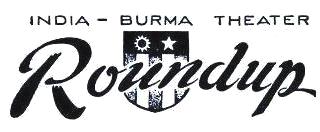
|
World's Largest Service Station Operates Along Ledo Road
Today the world's most unusual and largest super-service station operates along the Ledo Road, American-built highway between India and Burma.
No neon lights or brightly colored signs clamor for patronage nor do white-coated attendants hover about. Rude, bulldozered driveways lead to this jungle garage squatting in the shadows of the Patkai hills of upper Assam, where open-sided bamboo sheds house an impressive array of both modern and ingeniously improvised automotive equipment.
Beneath these tall shelters, roofed with Jeng leaves from the nearby wilderness, sweating, coverall-clad American soldiers and Indian workers are keeping a never-ending stream of Uncle Sam's trucks rolling to the Burma front with vital war supplies.
Nowhere else does the Army run a localized maintenance system on such a large scale. It is, in fact, an innovation, an example of American initative and resourcefulness, resulting from exceptional circumstances and conditions. It grew out of a need to lick, and to lick immediately, a motor maintenance problem which is the hardest, toughest, most heart-breaking in the world.
Brig. Gen. Lewis A. Pick, Base Commander, and himself a producer of miracles, called upon his Ordnance Officer to produce a maintenance miracle. Lt. Col. A. A. Kaufman, a hard-hitting Texan, knew what the General meant. A firm believer in the Army's time-tried "echelon" system of maintenance, he swiftly set about making it work under almost unbelievable conditions.
Kaufman planned something similar to a mass-production assembly line whereby each vehicle could enter a shop, roadworn and dirty, and emerge completely washed, checked, serviced, and repaired. The normal maintenance personnel and tools of all truck companies would be pooled. Indian mechanics and laborers would be employed as needed. Every branch of the Army would be called upon to furnish the best equipment that could be used.

|
Covering an area of between four and five jungle-cleared acres, this shop consists of a series of bamboo structures set in a square pattern around a parking lot, which is capable of holding 300 trucks. Designed to support a vehicle population of 1,000, it can, on a 20-hour operational basis, clear up to 300 vehicles.
It is operated by 110 U.S. Army soldiers, 140 Indian mechanics and laborers, and a Transportation Service staff of five officers, headed by Major R. J. Keefer. An Ordnance Warrant Officer, Motor Specialist, and an Ordnance Sergeant give technical advice and assistance.
Every efforst is made to finish a repair job on the same day it enters the shop, with a driver on call at all times to deliver the vehicle to the proper organization.
The shop has its own supply room, and one parts stockage is maintained, where there might otherwise be 16 or 20 in separate companies, 16 or 20 parts clerks tied up, 16 or 20 supply vehicles going to and from the Ordnance Depot.
Success of the project, the result of foresight, improvisation, and cooperation among all branches concerned, is proved.
While many other factors contributed, it can be fairly stated that Transportation Service Shop No.1 was largely
responsible for (1) reducing vehicle deadline in this area 83% ; (2) increasing by almost 100% the average vehicle
life-time, thus enabling hundreds of vehicles to continue operations at a time when they are vitally needed and,
(3) conserving costly replacement parts.

Original March 8, 1945 issue of India-Burma Theater Roundup shared by CBI veteran Howard Sherman.
Internet adaptation Copyright © 2006 Carl Warren Weidenburner. All rights reserved. Revised:
MORE CBI ROUNDUP
TOP OF THIS PAGE PRINT THIS PAGE ABOUT THIS PAGE
YOUR COMMENTS CLOSE THIS WINDOW